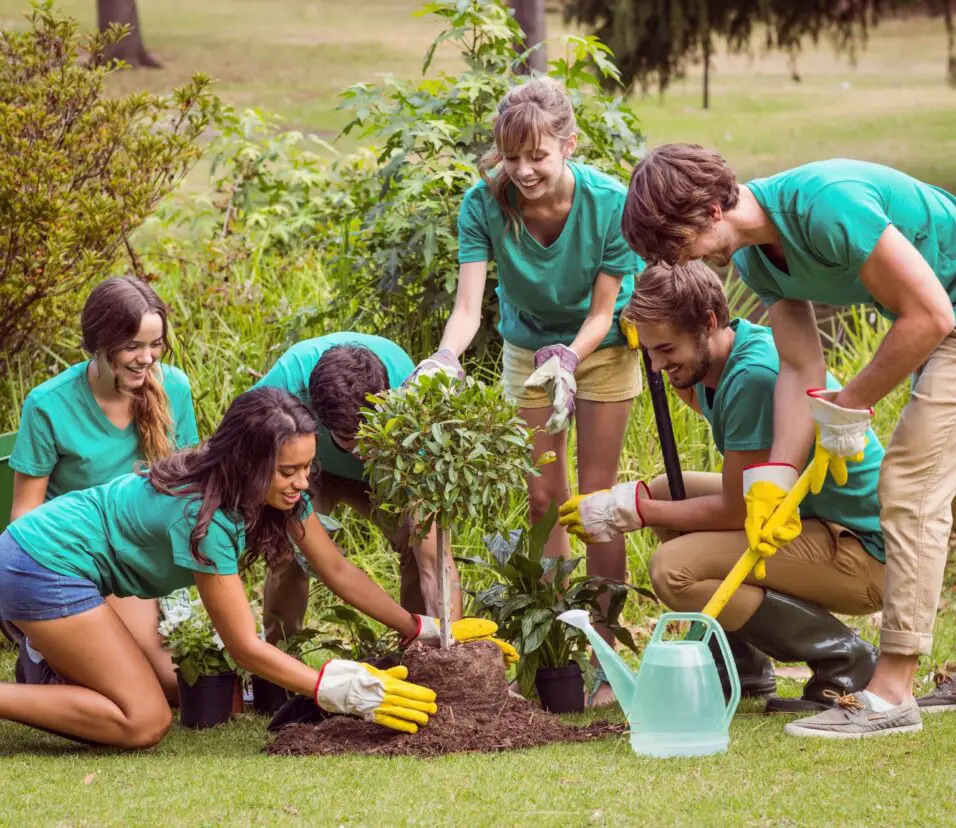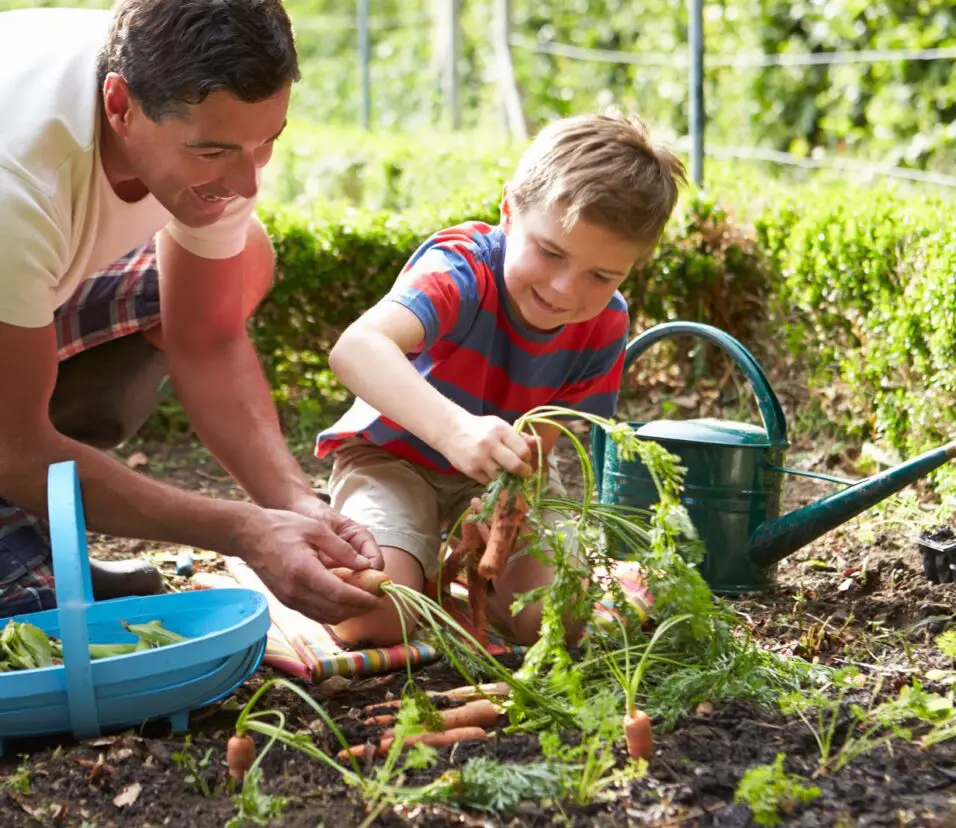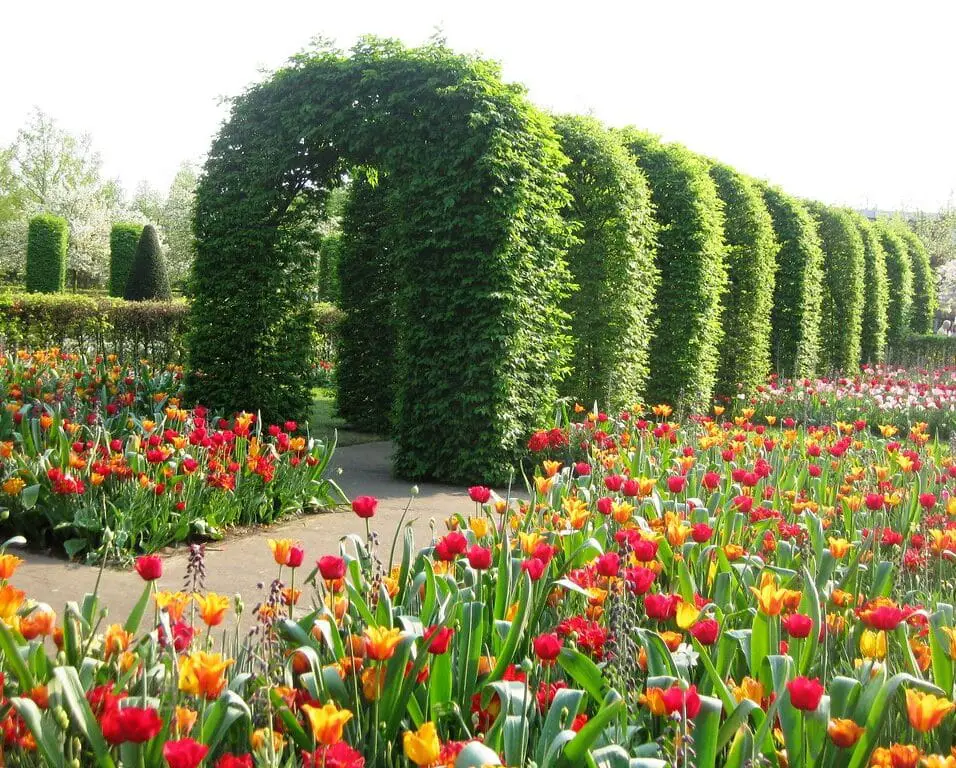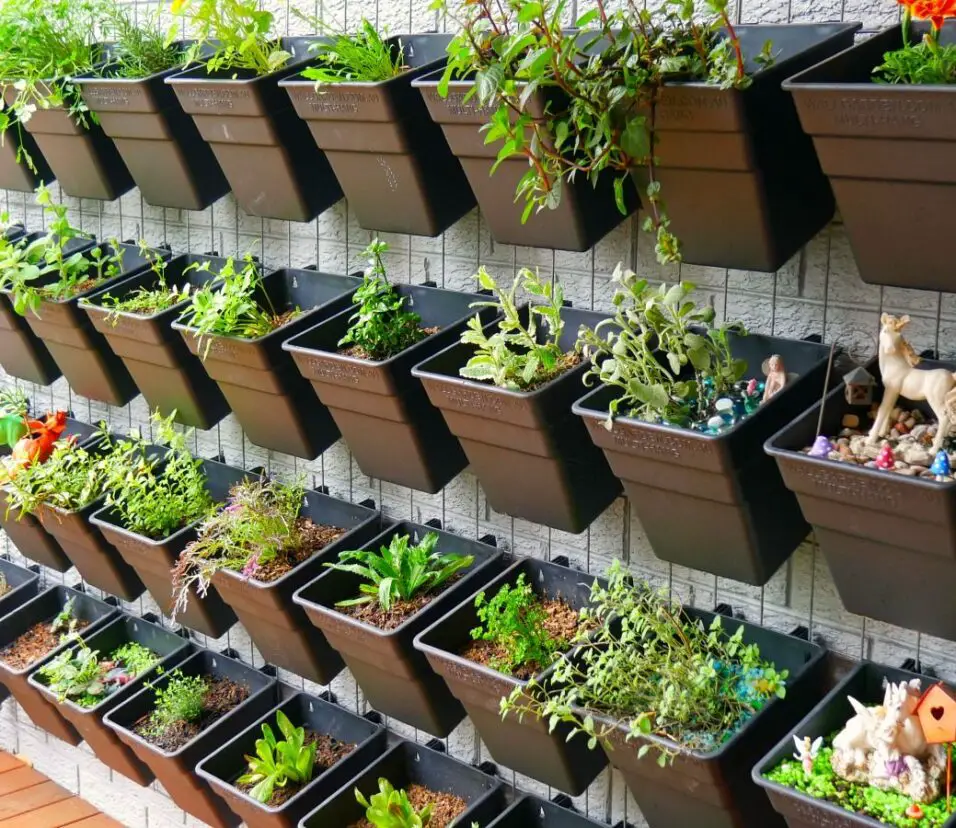What’s The Difference Between Gardening Soil And Potting Soil
Introduction
What’s The Difference Between Gardening Soil And Potting Soil: In the realm of horticulture, the selection of soil stands as a pivotal choice that significantly impacts the health and growth of plants. Two commonly encountered options are gardening soil and potting soil, each tailored to specific gardening contexts. The nuanced differences between these soil types can greatly influence the success of a garden or potted plants, making it essential for gardening enthusiasts to grasp their distinctive qualities.
On the other hand, potting soil, known as container mix or potting mix, is specially engineered for container gardening. It is formulated to meet the unique demands of potted plants, providing optimal aeration, moisture control, and nutrient availability within the confined space of containers. Potting soil often contains a blend of peat moss, vermiculite, perlite, and organic matter, meticulously crafted to promote root development and support plant growth in a restricted environment.
Aspiring gardeners must comprehend the disparity between market gardening soil and potting soil to make informed decisions when embarking on their plant-growing journeys. This exploration into their divergent characteristics will shed light on the intricate relationship between soil types and the flourishing of plants, ultimately leading to greener, more vibrant gardens and containers.

Which is better potting soil or garden soil?
Determining whether potting soil or garden soil is better depends on the specific context and gardening objectives. Garden soil excels when nurturing plants directly in the ground, offering a broader range of nutrients and beneficial microorganisms. Its natural composition supports long-term growth and fosters a robust ecosystem, making it suitable for large-scale outdoor landscapes.
It provides excellent aeration and moisture control crucial for potted plants, preventing issues like root rot. Potting soil also tends to be more lightweight and sterile, reducing the risk of pests and diseases in confined environments. This makes it an ideal choice for indoor plants, balcony gardens, or when growing specific plant varieties with distinct needs. Determining whether potting soil or garden soil is better depends on the specific context and gardening objectives. Garden soil excels when nurturing plants directly in the ground, offering a broader range of nutrients and beneficial microorganisms.
Can you use garden soil as potting soil?
Garden soil can be utilized as container media if altered. Garden soil, peat moss, and perlite or coarse builders sand make a good soil mix. Avoid fine beach or play sand. Garden soil is denser, which can hinder container drainage and aeration. This can cause waterlogging, root suffocation, and plant damage. Garden soil may also include weed seeds, diseases, and pests that can cause problems in containers. Its nutritional composition may fluctuate and not suit potted plants.
Garden soil can be treated with perlite, vermiculite, or coconut coir to increase texture and drainage for container planting. Mixing compost increases its nutrients. Container plants require proper balance, which might be difficult.
Container-specific potting soil is usually recommended. Potted plants need aeration, drainage, and sanitation, which potting soil provides. This method boosts container gardening success and plant health. Potting soil also tends to be more lightweight and sterile, reducing the risk of pests and diseases in confined environments. This makes it an ideal choice for indoor plants, balcony gardens, or when growing specific plant varieties with distinct needs. Determining whether potting soil or garden soil is better depends on the specific context and gardening objectives. Garden soil excels when nurturing plants directly in the ground, offering a broader range of nutrients and beneficial microorganisms.
How do I turn my garden soil into potting mix?
Making Soil-based Potting Media
2.Add one gallon of moist, coarse sphagnum peat moss, followed by one gallon of coarse sand, perlite, or vermiculite. Begin by preparing the garden soil by removing any debris, rocks, or weeds. To improve its structure, mix in materials like perlite, vermiculite, or coconut coir to promote better aeration and drainage. These additives prevent compacting, ensuring the soil remains loose within containers.
Next, incorporate compost to enhance the soil’s nutrient content. Compost introduces organic matter and beneficial microorganisms, fostering plant growth. Adjust the pH level if necessary, as many container plants prefer a slightly acidic to neutral pH range. To mitigate potential pathogens and pests, consider sterilizing the garden soil.
Regularly test the potting mix’s moisture retention and drainage characteristics by conducting a “squeeze test.” The ideal potting mix should hold moisture without becoming waterlogged.
What is the best soil for potted plants?
What happens if I use garden soil for potted plants?
Mineral and organic garden soils are used in the ground. They are poor container plants because the soil compacts and waterlogs, restricting root airspace. This can stunt growth. Potting soil also tends to be more lightweight and sterile, reducing the risk of pests and diseases in confined environments. This makes it an ideal choice for indoor plants, balcony gardens, or when growing specific plant varieties with distinct needs. Determining whether potting soil or garden soil is better depends on the specific context and gardening objectives. Garden soil excels when nurturing plants directly in the ground, offering a broader range of nutrients and beneficial microorganisms.
A well-balanced container gardening potting mix is great for potted plants. A good potting mix has crucial traits that benefit container-grown plants. Perlite, vermiculite, or sand help potting mixes drain well to minimize waterlogging and root rot. Coconut coir and peat moss should help it maintain moisture without compacting. Container plants receive steady water.
Organic debris or compost adds nutrients and nourishes plant-healthy microbes. Potting mixtures are sterilized to reduce pests and illnesses. The pH of the potting mix should match the plants you’re growing to promote nutrient uptake. To promote root growth and aeration, its texture should be light and loose.
Potting soil also tends to be more lightweight and sterile, reducing the risk of pests and diseases in confined environments. This makes it an ideal choice for indoor plants, balcony gardens, or when growing specific plant varieties with distinct needs. Determining whether potting soil or garden soil is better depends on the specific context and gardening objectives. Garden soil excels when nurturing plants directly in the ground, offering a broader range of nutrients and beneficial microorganisms.
What are the primary distinctions between gardening soil and potting soil in terms of their intended uses?
The intended usage and optimal settings distinguish gardening soil from potting soil. Garden soil, sometimes called topsoil, is meant for outdoor landscapes and supports ground-planted plants. It contains mineral particles, organic matter, and microorganisms to meet plants’ various needs in bigger outdoor situations. Its composition depends on regional conditions and provides drainage, moisture retention, and nutrient content for open garden development. Potting soil also tends to be more lightweight and sterile, reducing the risk of pests and diseases in confined environments.
This makes it an ideal choice for indoor plants, balcony gardens, or when growing specific plant varieties with distinct needs. Determining whether potting soil or garden soil is better depends on the specific context and gardening objectives. Garden soil excels when nurturing plants directly in the ground, offering a broader range of nutrients and beneficial microorganisms.
However, potting soil, also known as container mix, is designed for container gardening. It is carefully designed to address container space and drainage issues. Peat moss, vermiculite, perlite, and organic matter are carefully chosen to optimize potting soil aeration, moisture control, and nutrient availability for limited plant growth. This unusual composition reduces waterlogging and root suffocation, making it ideal for indoor plants, balcony gardens, and special-needs potted specimens. Different compositions and objectives emphasize the necessity of choosing the proper soil type for successful gardens or container plantings.
How does the composition of gardening soil differ from that of potting soil, and how does it impact the growth of plants?
Due to their different uses and cultivation circumstances, gardening soil and potting soil differ greatly, affecting plant growth. Native soil, organic matter, minerals, and microbes make up outdoor gardening soil. Local conditions and natural variables shape its composition, promoting deep-rooted plant growth. Variability in its composition might impact drainage and nutrient delivery, causing uneven plant growth and restricted root development.
Potting soil, on the other hand, is carefully mixed with peat moss, perlite, vermiculite, and organic matter for container planting. This blend optimizes container aeration, moisture retention, and nutrient availability. Potting soil is light and drains easily, preventing waterlogging and compaction for healthy root growth and vivid plants. Potting soil’s sterilization reduces pests, illnesses, and weed seeds in containers.
The differences in composition between gardening and potting soil highlight their different effects on plant growth. Gardening soil thrives in wide spaces, whereas potting soil addresses the limitations of container gardening.
What specific features make gardening soil well-suited for outdoor landscapes, and why might it not be ideal for container gardening?
Due to their different uses and cultivation circumstances, gardening soil and potting soil differ greatly, affecting plant growth. Native soil, organic matter, minerals, and microbes make up outdoor gardening soil. Local conditions and natural variables shape its composition, promoting deep-rooted plant growth. Variability in its composition might impact drainage and nutrient delivery, causing uneven plant growth and restricted root development.
Potting soil, on the other hand, is carefully mixed with peat moss, perlite, vermiculite, and organic matter for container planting. This blend optimizes container aeration, moisture retention, and nutrient availability. Potting soil is light and drains easily, preventing waterlogging and compaction for healthy root growth and vivid plants. Potting soil’s sterilization reduces pests, illnesses, and weed seeds in containers.
The differences in composition between gardening and potting soil highlight their different effects on plant growth. Gardening soil thrives in wide spaces, whereas potting soil addresses the limitations of container gardening. Potting soil also tends to be more lightweight and sterile, reducing the risk of pests and diseases in confined environments. This makes it an ideal choice for indoor plants, balcony gardens, or when growing specific plant varieties with distinct needs. Determining whether potting soil or garden soil is better depends on the specific context and gardening objectives. Garden soil excels when nurturing plants directly in the ground, offering a broader range of nutrients and beneficial microorganisms.
How do potting soil and gardening soil differ in terms of their roles in supporting root development and overall plant health?
Potting soil and gardening soil encourage root development and plant health differently. To maximize root growth in containers, potting soil is designed. Aeration from its well-balanced peat moss, perlite, and vermiculite allows roots to breathe and grow freely. It inhibits root compaction and waterlogging, which limit growth. Potting soil’s capacity to retain moisture without getting saturated ensures roots receive a consistent water supply, promoting optimal hydration levels for continued growth. Sterilized potting soil eliminates weed seeds, diseases, and pests, improving plant health.
Container gardening may not work well with gardening soil, which supports root development in open environments. Local factors can affect its composition, causing irregular container drainage and nutrient distribution. The thicker texture of gardening soil may inhibit root growth and aeration, harming plant health. In containers, weeds, pests, and illnesses can spread quickly, endangering plant health.

Conclusion
In the intricate world of gardening, the choice between gardening soil and potting soil emerges as a pivotal determinant of the success and vitality of plant life. The distinctions between these two soil types, meticulously crafted for specific horticultural contexts, reveal the depth of consideration required when nurturing greenery, whether in open landscapes or confined containers.
Gardening soil, with its intricate blend of native components, stands as the foundation of outdoor ecosystems, fostering the growth of plants within the expansive canvas of nature. Its composition, shaped by regional influences, promotes deep-rooted plants that flourish amidst the richness of organic matter and microbial life. However, this prowess might falter when transferred to the constraints of containers, where drainage, aeration, and confined space pose challenges that traditional gardening soil might struggle to overcome.
In the quest to create flourishing gardens and thriving potted plants, understanding the nuances of gardening soil and potting soil is paramount. Aspiring gardeners must embrace the knowledge that the choice of soil is a reflection of the environment they aim to cultivate, aligning their selection with the needs and conditions of their chosen green spaces. The interplay of gardening soil’s natural charm and potting soil’s precise engineering provides a testament to the art and science that coalesce in the world of horticulture, promising bountiful gardens and vibrant containers to those who discerningly tread its pathways.








